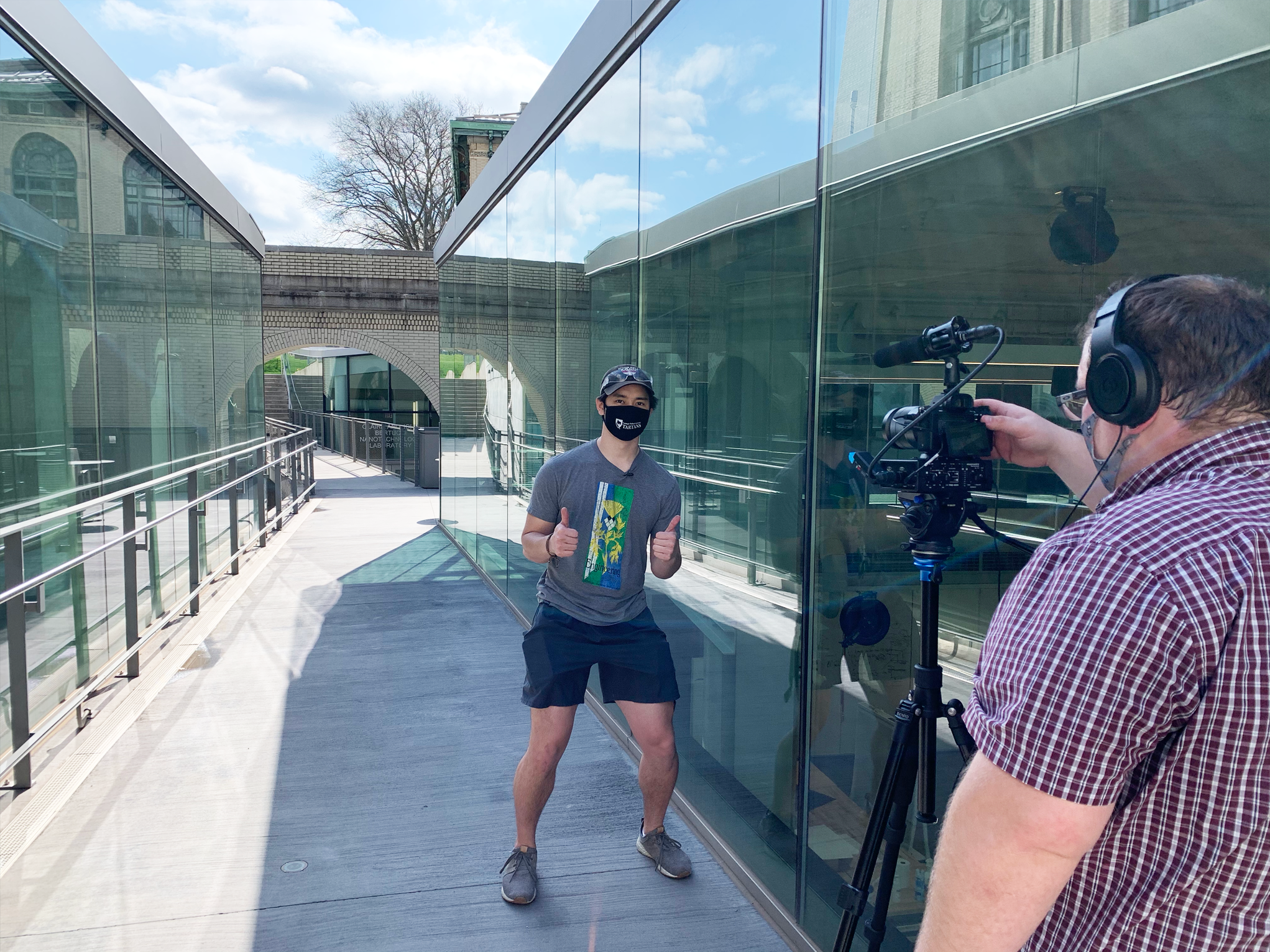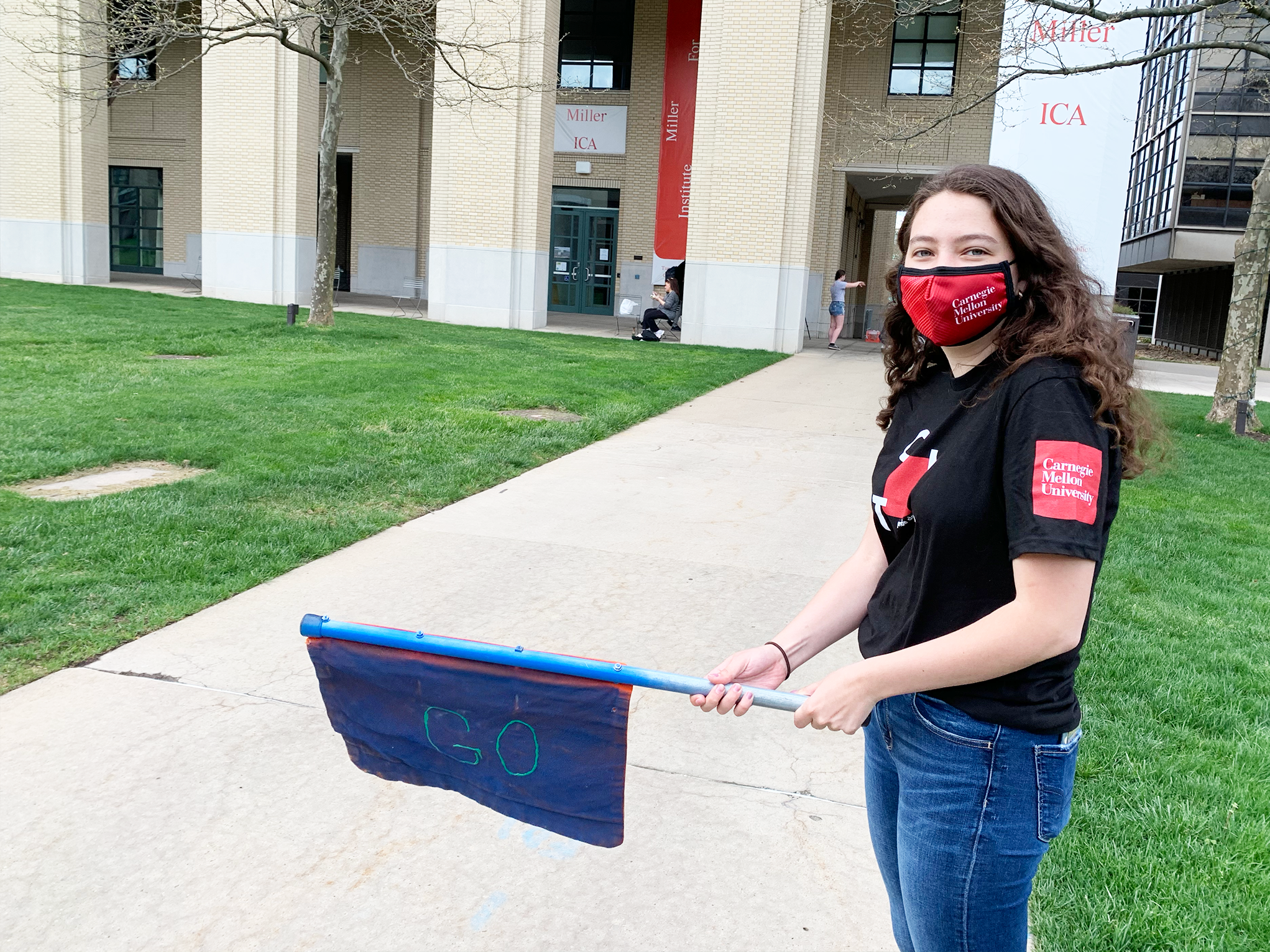This is how we roll
From an academic perspective, Buggy symbolizes education in motion. The sleek, three-wheeled vessels are the byproduct of classroom and hands-on learning that’s reinforced with legacy knowledge.
Every school has its traditions, but only Carnegie Mellon University has Buggy.
CMU’s Buggy Sweepstakes is a relay race where student teams compete against each other in motorless, torpedo-shaped vehicles that reach speeds up to 40 mph.
Thrills and spills? You bet. Typically, students and alumni crowd around Schenley Park’s Flagstaff Hill to watch the races. Pandemic restrictions have nixed the fanfare this year, but there will be modified Buggy heats on May 1-2. Buggy is engrained in the CMU psyche, and for some very committed students, passing on Buggy in 2021 was not an option.
“Even rolling for a little bit this year helps teams pass on the institutional knowledge that is associated with Buggy,” says Conrad Zapanta, teaching professor of biomedical engineering and the faculty advisor for the Fringe racing team.
From an academic perspective, Buggy symbolizes education in motion. The sleek, three-wheeled vessels are the byproduct of classroom and hands-on learning that’s reinforced with legacy knowledge.
All my courses play into some aspect of Buggy.
Jose Garcia, Junior, Mechanical Engineering
“All my courses play into some aspect of Buggy,” attests Jose Garcia, a junior in mechanical engineering. Recalling the merits of first-year physics, and now, more advanced courses in fluid dynamics, he can tie specific lessons to negotiating the 90-degree turn on the racecourse or how drag and lift factor into making a buggy aerodynamic.

Source: College of Engineering
David Cochran interviews Carl Young (MechE/BME, 2021) outside of ANSYS Hall
Pride compels students to bring everything they have to the competition. They use modeling and advanced simulation tools to make the buggies faster and safer. “Like a lot of engineering projects, a buggy really starts with a 3D model,” says Sydney Baker, a senior in mechanical engineering and Chinese studies. “The cool part about Buggy is that you see this idea that you’ve only seen on a screen and you start making it real.”
The designs may look amazing, but optimizing them takes trial and error. When students run the buggies, an odd sound or vibration can indicate a problem. “We diagnose the problem and fix it. And then you keep rolling. It’s so satisfying to see it roll right,” says Carl Young, a senior in mechanical engineering and biomedical engineering.

Source: College of Engineering
Elly Seiler (MechE, 2021) doing capability testing (capes) of buggy #2 on the sidewalk by the Walking to the Sky public sculpture on campus.
To design a race-worthy buggy takes input from different disciplines across Carnegie Mellon. “I learned how to delegate and how to shift my expectations based on other people’s backgrounds. Buggy helped me develop nontechnical skills. I am a better leader now. Also, as a woman engineer, Buggy was a welcoming experience and has helped with my confidence going into other engineering environments,” says Elly Seiler, a senior in mechanical engineering.
“The biggest career lesson I learned from Buggy is how much more there is to engineering than just CAD or what I think of as traditional mechanical engineering. Everything from manufacturing to process improvement to risk management to team culture and history play a role in what the “right” design decisions are for your team,” says Baker.
Bringing people together is the magic of Buggy, and once it’s in your blood, it doesn’t go away.
“Buggy instantly bonds CMU alumni, no matter how big the age gap or major,” says Zapanta.
“Buggy is my favorite thing about Carnegie Mellon. I cannot over stress how much it has taught me about engineering. I love Buggy, and I love the friendships I have made from it,” says Seiler.
